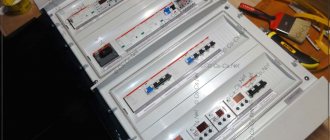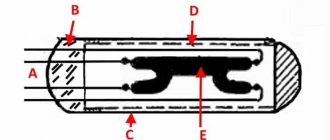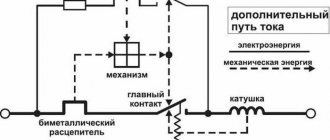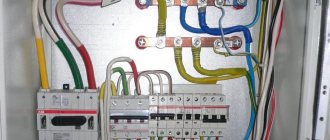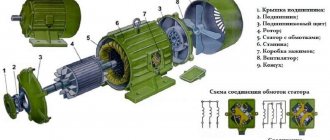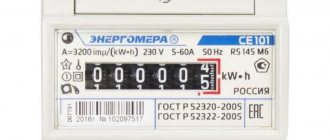Today there are 7 key energy efficiency classes: A, B, C, D, E, F, G. Classes are assigned to electronic devices based on the amount of kilowatts consumed during operation. Each letter is marked against a background color from green to yellow to red.
In Europe, since 1995, energy consumption classes have been used for household and office equipment, depending on the power consumption. Each European-made device must be marked and have a corresponding sticker with energy parameters. Classes are marked in Latin letters on a scale from A (very economical appliances) to G (appliances with high energy consumption).
Also, the stickers for each class correspond to a shade on the scale: A, B, and C are indicated in green, and further ones are marked in yellow and red.
A little history
Labeling the energy consumption class of a product has been used in Europe since the 90s of the 19th century. Now the label is used in more than 50 countries around the world. Mandatory energy efficiency labeling has become a key tool for efficient energy consumption and a driving force for reducing the energy intensity of the gross national product.
In practice, there are now two energy efficiency labeling systems:
- The American Energy Guide model, which involves analyzing the energy consumption of similar products and selecting from them about 25% with the lowest energy consumption, which are assigned the Energy Guide brand
- The labeling model adopted in the EU countries, which involves dividing all products of the same type into seven classes, from A to G. The same designations apply in Russia. The division is made according to the ranges of quantitative indicators of energy efficiency throughout the entire range of characteristics from the most economical to the most energy-wasting
The main levers of influence of energy efficiency labeling on the energy intensity of the economy include:
- restrictions on the export of energy-intensive products (the import of products of classes F and G into the EU countries is prohibited, and temporary restrictions have been introduced on the middle classes D and F)
- linking energy efficiency with carbon dioxide emissions into the atmosphere, implying the inclusion of labeling in the system of sales of air emission quotas
- a system of fiscal measures to limit the production and sale of energy wasteful equipment
- state support for those enterprises that are focused on using energy-efficient goods in the production
- discounts for consumers choosing energy efficient technologies
- promotion of energy saving and respect for the environment
Explanation of energy efficiency labels
The higher the energy consumption class of the device, the more efficiently it will work, while economically consuming energy resources. Products with the letter A marked on the packaging have the lowest energy consumption; products of class G, on the contrary, are the least efficient to use.
The gradation of consumer properties of a product by energy consumption class consists of ten steps. The energy consumption class affects prices: as the class increases, the cost of the product also increases.
At the same time, if your household appliances do not reach the first letter of the alphabet, this does not mean that they are bad. Products of classes “B” and “C” are also considered economical, since they spend only 75% and 95% of the norm, which in any case is less than 100%.
The quality and energy efficiency of devices may be higher than A. Some models may be marked “A+”, “A++” or “A+++”, which means they are even more efficient in use. Energy saving classes such as E, F, G, due to wastefulness of electricity, are practically not found among the characteristics of modern products.
“A+” class equipment will spend up to 42% of electricity from the standard 100%, a product with o will spend up to 30% of electricity, and an “A+++” class model will spend up to 22%.
The color will also tell you about the energy consumption class: the highest energy efficiency class is indicated by the darkest green color, a burgundy shade will indicate very high energy consumption. The cooler the color, the better.
Expert opinion
Which refrigerator model with an economical energy consumption class is better from the range available on the domestic market? According to the expert, the best representatives of energy-saving refrigerators are represented by the following models:
- A+++ Siemens KD 29EAL40; Samsung RL-58 GQGIH; Bosch KGN39XI40; Bosch KGE36AL40
- A++ Samsung RB-29 FERNCSS; Bosch KIF42P60; LG GA-B489 TGDF; Hotpoint-Ariston EBLH 18323 F.
- A+ Samsung RB 29 FSRNDWW; Beko RCNA 400E 21ZXP; Gorenje NRK6191GHX4; Atlant XM 6125-180.
- A Samsung RB29HSR2DSA; Snaige FR275; Panasonic NR-B591BR; Biryusa 149 M.
The energy consumption class affects the cost of refrigeration equipment. The difference in cost between adjacent classes in models of the same brand can reach 25%.
If your financial condition does not allow you to purchase a new energy-efficient model, then you should take care of the old refrigerator: change the gasket on the door, install the unit in such a way as to ensure good air circulation on the back wall of the device.
Watch the video: Refrigerator energy consumption classes
Information on Energy Efficiency Labels
Labels on energy efficiency labels must contain at least four categories describing the properties of the product. At the moment, additional parameters are being added to the main parameters: useful volume, form factors, noise level and others.
Labels usually indicate:
- Type of equipment, manufacturer
- brand, model
- Energy efficiency class
- Energy consumption per operating cycle
- Useful volume
- Form factor type
- Noise level
In the diagrams, in addition to the energy consumption class, you can obtain other information necessary when choosing a model:
- inherent features of the model and materials used in its manufacture
- consumption, efficiency, power and other specific characteristics
- capacity and dimensions of the device
- noise level (sound efficiency)
How much does a refrigerator consume in kW per year?
You can calculate electricity consumption for the year taking into account the indicators per hour or daily, which are indicated in the technical specifications in the passport of the refrigeration equipment.
Modern household appliances sold on the domestic market consume about 220-460 kW annually.
However, there are other factors that influence the amount of electricity consumed during operation:
- Room temperature. The warmer the air in the room, the more electrical energy the refrigeration unit consumes to maintain stable cold in the compartments and freezer.
- The quality of seals in the doors of household appliances can indirectly affect the stability of maintaining low temperatures in the refrigerator. It is important to regularly replace sealing materials and check the reliability of the sash slamming.
- The frequency of use of household appliances affects the amount of electricity consumed. The highest consumption can be noted when the doors are opened every 1-2 hours. The unit will require more electricity to maintain sub-zero temperatures in the compartments.
- The presence of additional functionality in the model in the form of backlighting and an ice supply device increases energy consumption.
When choosing a model, it is important to consult with a specialist, evaluate the frequency of use and the required dimensions of the household device.
What affects energy consumption indicators
The main energy efficiency indicators are influenced by the following factors:
- selecting an operating mode (for example, on a dishwasher, a long mode of washing dishes at high water temperatures will increase electricity costs)
- overload (for example, a large amount of laundry loaded into the washing machine, which will become even heavier when wet, will also increase energy costs)
- maintenance and service life (for example, over time, plaque may form in an air conditioner, which will impede the transfer of heat/cold), thereby increasing electricity consumption)
Methods for confirming the energy efficiency indicators of products include:
- declaration of the product manufacturer, which is based on product testing under regulated conditions in accordance with the method determined by the regulatory document;
- certification tests of products, which are established by state standards;
- The assignment of an energy efficiency mark to an energy-consuming product is carried out by a certification body authorized by the State Standard of Russia.
Energy efficiency classes of refrigerators and freezers
A constantly turned on refrigerator is one of the main consumers of electricity in an apartment, so the energy consumption class is very important when choosing a model.
Refrigerators and freezers are designated from "A+++" to "G". Their energy efficiency class is determined by an index, which is the ratio of actual energy consumption to nominal energy consumption. For refrigerators and freezers, this index refers to the relationship between annual electricity consumption and the volume of food refrigerated.
An index below 22 corresponds to energy consumption class “A+++”, and an index above 150 refers to class “G”. Refrigerators of the “A+++” class will consume five times less energy than the average model, while the “G” class product will consume twice as much energy.
At first glance, it may seem that products of classes “A+++” and “A” differ slightly from each other, but in practice, a class “A+++” device consumes half as much electrical energy as a class “A” model.
In addition to the already familiar letters indicating the energy consumption class, the multi-colored diagram of refrigerators and freezers will also indicate:
- brand and model
- annual energy consumption
- useful volumes of refrigerator and freezer compartments
- noise produced
TOP 5 economical refrigeration units
Having set the goal of purchasing the most economical model, you should study in more detail the offers of leading manufacturers. The range of refrigeration equipment is rich and choosing the best option that meets your needs is not difficult.
We invite you to familiarize yourself with 5 economical units from the best manufacturers.
Model #1 - Liebherr CBN 4815
The CBN 4815 unit of the Liebherr brand has a high price, averaging 72 thousand rubles, but also the most economical consumption category at the moment - A +++.
The energy consumption of the CBN 4815 model under consideration is much lower than average: 186 kW/h per year, 15 kW/month and 0.51 kW/h per day
Despite such modest needs, the manufacturer managed to combine many innovative developments in the unit. It provides convenient flexible temperature settings using a touch screen, a super freezing option, and a built-in activated carbon filter that purifies the air from bacteria and contaminants.
The doors are protected with a reliable, replaceable seal that matches the color of the body. The only drawback of the modification stems precisely from the main advantage - efficiency.
The Liebherr brand refrigerator has a decent volume of 343 liters, is equipped with a NoFrost system and an additional BioFresh freshness zone
We are talking about the low power of the compressor, which takes a long time to produce cold when turned on. It takes about a day for it to enter normal operating mode, despite the fact that most modern and Soviet refrigerators reach the desired temperature within 10-30 minutes.
Among the additional features, the Liebherr CBN 4815 has a super-cooling and super-freezing mode, as well as a light and sound indication that informs the owner about the open door and rising temperature
The following video demonstrating the main capabilities of the model and the layout of the internal space of the working chambers will help you form your opinion about the CBN 4815:
In the wide range of Liebherr products, in addition to the refrigerator we presented, there are a number of excellent models. They have earned the recognition of both owners and repairmen, who rarely have to restore their functionality. Our rating of refrigerators will help you choose the best option.
Model #2 – LG GA B489 YEQZ
The spacious and tall GA B489 YEQZ equipment from the LG brand, A++ class equipment, is cheaper than the previous model. The cost of this model starts from 51 thousand rubles.
The total volume of the internal compartments of the GA B489 YEQZ refrigerator is 360 liters. It is praised for its stylish design and thoughtful ergonomics
Energy consumption indicators are 237 kW/h per year, 20 kW/h per month, 0.65 kW/h per day. The unit operates on an economical and relatively quiet inverter compressor. It comes with a ten-year warranty period.
No Frost applies to both compartments, so the freezer compartment does not need to be defrosted manually. Each compartment has LED lighting.
The design provides a separate folding shelf. By quickly folding it, you can free up a lot of space, which is not enough for tall cans and pans
A special feature of the model is the unusual structure of the lid of the block for vegetables/fruits. It has cells that trap condensation, preventing drops from falling on the food.
Thus, the optimal humidity necessary to preserve the taste and beneficial properties is maintained.
The refrigerator has a zero zone for short-term storage of fresh seafood and meat, quick freezing function, holidays and others
In addition to the model we have described, the range offered to consumers includes a number of interesting offers; the article we recommend will introduce you to the best LG refrigerators.
Model #3 - Bosch KIS87AF30
Built-in appliances made in Germany, distinguished by their interesting design and compact dimensions, are an ideal solution for cramped kitchen spaces.
The Bosch KIS87AF30 refrigerator is characterized by class A++, in which it consumes 226 kW/h per year, 19 kW/h per month, 0.62 kW/h per day. Its cost averages 49 thousand rubles.
The declared volume of both chambers is 272 liters. They have many compartments and areas dedicated to different types of products
The equipment is controlled through an electronic sensor unit, which allows you to set a favorable temperature regime for both the refrigeration and freezer compartments.
The inner surface is treated with an antibacterial mixture that suppresses the spread of microorganisms and bacteria.
The KIS87AF30 from Bosch has the functions of fast cooling and freezing, sound indication of an open door, and a vacation mode. The device operates almost silently
The line of popular German Bosch brand refrigerators will be presented in the following article, devoted to an analysis of their features and characteristics.
Model #4 – Samsung RB-31 FERNCSA
Model Samsung RB-31 FERNCSA with a set of good technical characteristics and an affordable price.
The manufacturer indicates A++ as the energy consumption class, but consumers note that the actual indicators still correspond to category A+
At the stated level, the parameters are in the “Vacation” . Nevertheless, the unit is quite economical: 257 kW/h per year, 21.5 kW/h per month, 0.70 kW/h per day. The volume of the chambers in the refrigerator is quite large - 304 liters. Their interior space is well organized.
Design elements such as a tray for sauces, a convenient drawer in the freezer, and a shelf on wheels allow you to quickly remove the necessary products from the farthest corners of the chamber. There is a special compartment with a freshness zone for meat and vegetables.
Thanks to True No Frost technology, food is cooled evenly without the formation of frost and ice crusts on the internal walls and surfaces of products
The device has a built-in inverter motor that operates in five effective modes. It is silent, quite durable, and is not afraid of changes in the power supply.
The South Korean manufacturer supplies the market with excellent household appliances, including functional and reliable refrigerators, the characteristics of which we suggest you familiarize yourself with.
Model #5 - Siemens KG39NXB35
Stylish Siemens KG39NXB35 with thoughtful technical content and touch controls. Energy consumption class – A++. For full operation, it spends 273 kW/h per year, 23 kW/h per month, 0.74 kW/h per day.
The refrigerator is equipped with fast freezing capabilities followed by automatic shutdown. And also autonomous maintenance of cold for 17 hours with a well-functioning multi-threaded cooling system
The useful volume of the equipment is impressive and amounts to as much as 366 liters. A freshness zone is built inside the refrigeration section, providing the necessary conditions for long-term storage of vegetables and fruits.
In addition to the standard adjustable tempered glass shelves, there is a chrome-plated metal bottle rack. The freezer compartment has a freezing calendar.
An expert video review will help you understand the model’s capabilities in more detail:
The best refrigeration machines from the famous German concern are presented here: the rating is based on reviews from users and representatives of service workshops.
Energy efficiency classes of washing machines and clothes dryers
Washing machines take an honorable second place among passive consumers of electricity in the house. For them, the energy efficiency indicator depends on the energy consumption per 1 kg of washed laundry at a temperature of 60°C.
Washing machines and clothes dryers are designated "A+++" to "D", but they are assigned very differently from refrigerators. Behind each letter is the electricity consumption in kilowatt-hours for washing. To determine the energy efficiency class, you need to correlate the actual and standard resource consumption.
A class “A” model will consume less than 0.19 kWh/kg. A dryer of the same class will consume less than 0.55 kWh/kg. When loading 6 kg, 1.52 kWh/cycle or 334 kWh/year is taken as 100%. At the same time, the index of a class “A+++” machine is less than 46, and the index of a class “A” washing machine will be about 60.
Please note that the energy consumption coefficient for washing machines with a drying function of each class will be much higher than for a conventional machine. Such a class “A” unit will consume about 0.68 kWh/kg.
You can see cars with the same energy consumption at different energy consumption classes. This may depend on the washing class, spin class and other specifics.
In addition to the energy consumption class, the multi-colored diagram of washing machines and dryers will also indicate:
- brand and model
- annual energy consumption
- annual water consumption
- spin class
- maximum load weight
- noise produced
- type and duration of drying
Rating of budget refrigerators 2019-2020
| Photo | Name | Rating | Price | |
| #1 | Pozis RK-102 W | 84 / 100 | More details | |
| #2 | Biryusa 127 | 88 / 100 | More details | |
| #3 | BEKO DS 333020 | 92 / 100 | More details | |
| #4 | ATLANT XM 6026-031 | 96 / 100 | More details |
Pozis RK-102 W
Pozis RK-102 W The best-selling and inexpensive refrigerator (according to Yandex.Market), has collected the largest number of positive reviews.
Characteristics:
- Small height (162 cm) and volume - 285 l.;
- Warranty period - 5 years;
- Energy consumption level - 226 kWh/year;
- Drip system in the refrigerator compartment;
- The most inexpensive refrigerator is from 13,900 rubles.
pros
- Compact;
- Economical (class A+);
- Cools quickly and maintains temperature for a long time;
- Low price.
Minuses
- Low position of the refrigerator handle (60 cm from the floor);
- A little noisy;
- There are few shelves and they are made of fragile plastic;
Biryusa 127
Biryusa 127 In our opinion, this is the most successful model from.
An inexpensive and reliable domestic refrigerator, which primarily stands out for its high capacity.
Briefly about the key characteristics:
- Dimensions: 60×62.5×190 cm;
- Drip defrosting system (in the freezer - manual);
- Energy consumption class A (310 kWh/year);
- Price: from 14,500 rub.
pros
- The most spacious - volume 345 liters;
- Pleasant appearance;
- High quality shelves, adjustable;
- Sound indication of an open door.
Minuses
Flimsy refrigerator handle
BEKO DS 333020
This refrigerator is considered the most versatile in its category.
The quality of the Turkish brand “BEKO” is not inferior to European manufacturers. This is confirmed by hundreds of positive reviews from specialists and customers.
Regarding the BEKO DS 333020 model, we can briefly say the following about it:
- Roomy - 310 l.;
- Economical (class A+);
- The lightest among the nominees: 58.7 kg;
- Antibacterial coating;
- Price: from 14,500 rub.
pros
- Quiet;
- High build quality;
- Good ratio of chamber volumes;
- The best price/quality combination.
Minuses
- The freezer is on top, so the vegetable drawer is very low;
- Discrepancy between the actual basic configuration and the one shown in the photographs (be sure to check this point before purchasing).
ATLANT XM 6026-031
A very high level of approval (95%), hundreds of positive reviews and, accordingly, high representation in stores.
Key characteristics of ATLANT XM 6026-031:
- Impressive capacity - 393 liters;
- 2 independent compressors;
- Energy consumption class A (391 kWh/year);
- Dimensions: 60x63x205 cm;
- Low price: from 20,500 rub.
pros
- Overall volume;
- Price;
- Freezes well;
- Possibility to turn off one of the compressors and reduce energy consumption.
Minuses
- When starting the compressors it makes quite a loud noise;
- Outdated temperature control system;
- Slot for 8 eggs;
- Not the highest quality plastic baskets in the freezer;
- No frost
Energy efficiency classes of dishwashers
The energy efficiency class index of a dishwasher is calculated in approximately the same way as that of a washing machine.
Standby energy consumption data is summarized over 280 dishwashing cycles with average consumption. The average consumption is washing 12 sets of dishes, which consumes 462 kWh of electricity per year.
An index of less than 50 is assigned to class “A” dishwashers; an index of over 90 is typical for the lowest class of such machines, that is, “G”. The energy consumption class of dishwashers also depends on the classes of washing and drying dishes.
The dishwasher diagram will also show the following along with the energy class:
- brand and model
- annual energy consumption
- annual water consumption
- drying class
- number of cookware sets
- noise produced
Manufacturers of the most energy-saving models
Today, domestic consumers are most in demand for refrigeration equipment with energy consumption classes A, A+, A++, A+++. The leaders in the production of such equipment are foreign brands Siemens, Liebherr, Bosch, LG, Samsung, Whirlpool. In the budget segment, one can highlight energy-efficient equipment produced under the brands Nord, Ariston, Indesit and Atlant.
Examples of refrigerators
Energy efficiency classes of electric ovens
Ovens are designated from “A+++” to “G”. Their energy consumption class directly depends on power, cooking temperature, and also on capacity. Energy will be wasted less if the oven power is higher and the volume is smaller.
An “A+” class oven will save energy by 25%, and energy savings with an “A++” class oven will double – by 50%.
A large-volume oven (more than 65 liters) will consume electricity more than 1.0 kW/h, a medium-volume oven (from 35 to 65 liters) will consume more than 0.80 kW/h, and a small-volume oven (from 12 to 35 liters) will consume more than 0.60 kW/h.
In addition to the energy efficiency class, the oven label will inform you about:
- brand and model
- annual energy consumption
- volume
- noise produced
Air conditioner energy efficiency classes
The energy consumption class of an air conditioner is made up of cooling coefficients (EER) and heating coefficients (COP), which are defined as the amount of cold or heat produced when one kilowatt of electricity is consumed under normal conditions at 100% load.
This coefficient shows how many times the cooling or heating power produced by the air conditioner is higher than the power consumed.
An “A” class air conditioner will spend over 3.6 kW. Air conditioners of the lowest class “G” will need less than 2.4 kW. Such values will be correct for weather conditions accepted as normal.
Taking into account global climate change, seasonal indices (SEER and SCOP) are used in Europe, which take into account deviations from normal temperatures.
In addition to the energy consumption class, the sticker on the air conditioner packaging contains information about:
- brand and model
- type of air conditioner and cooling method
- annual or hourly energy consumption at maximum loads
- heating and cooling power
- seasonal energy efficiency coefficients
- noise produced
- heating intensity and energy efficiency
How to prevent overconsumption of electricity?
The actual energy consumption figures, for which you will have to pay on receipts, largely depend on the correct installation location and compliance with the normal operating conditions of the refrigerator.
It is not recommended to store liquids in open containers in refrigerator compartments. Such neglect of operating rules disrupts the normal functioning of the evaporator
In order not to be upset because of too high amounts, you should find out in advance how to choose a refrigerator and take note of a few useful tips:
- Do not set the temperature in the freezer at the lower limit of the normal limit if you do not plan to store large volumes of food in the chamber for a long period.
- Adjust the thermostat taking into account the occupancy of the unit and the ambient temperature.
- Open the appliance doors only when absolutely necessary. Keep the equipment open for a minimum time, then close the door tightly.
- Before storing dishes and food in the refrigerator, cool them to room temperature.
When installing equipment indoors, you need to leave a gap between the back of the case and the wall. The minimum gap is 10 cm. The same applies to the sides. It is advisable that the device does not come into direct contact with nearby furniture and appliances.
There should be no heating equipment near the installation site of the device. It is necessary to try to protect it from close contact with radiators, stoves, ovens and other heat sources.
Energy efficiency classes of vacuum cleaners
Vacuum cleaners are designated from “A+++” to “D”. Those vacuum cleaners that are designed for cleaning carpets are assigned two energy consumption classes.
In the case of vacuum cleaners, the assigned energy consumption class indicates not only electricity consumption, but also the cleaning efficiency.
The energy efficiency label tells you the approximate amount of dust in the air after cleaning with the selected vacuum cleaner.
It will also indicate the annual electricity consumption in kW/h, which is calculated based on 50 cleanings per year in a room of 87 square meters.
Network connection specifics
When installing appliances in the kitchen, use a separate connecting power line . Since an electric stove is a powerful device, appropriate wires, machines, sockets, etc. are used to connect it.
To join you will need:
- power socket 32 A;
- introductory automatic group of at least 32 A;
- three-core copper wire with double insulation (section 4 sq. mm);
- RCD for 32 A.
During installation, comply with all safety regulations . The connection is made with special care to prevent overheating of the contacts.
Energy efficiency classes of lighting lamps
The lamps are designated from “A+++” to “G”. The assigned class directly depends on the relationship between power consumption and luminous flux (in lumens).
Class “A” most often includes LED lamps; halogen lamps occupy a niche from class “B” to class “C”, depending on the model. Low wattage incandescent lamps have the lowest energy efficiency.
⚠️ From January 1, 2011, incandescent electric lamps with a power of 100 watts or more, which can be used in alternating current circuits for household lighting, are not allowed for circulation in Russia.
The lamp label, along with the energy consumption class, will also indicate:
- brand and model
- lamp luminous flux
- service life in hours
Power distribution
Assessing the characteristics of electrical appliances makes it possible to identify the most and least energy-intensive devices. A modern flat-screen TV consumes up to 100 W, a vacuum cleaner about 1000 W, a kettle – 1500 W, and an electric stove as much as 3.5 kW. Every house has a refrigerator. It consumes an average of 75 watts. It would seem that this is relatively little, but the same electric kettle works 15-20 minutes a day, and the refrigerator works around the clock. Based on this, power distribution should be carried out taking into account daily consumption, and not the nominal one indicated for 1 hour of operation. With this approach, the energy consumption of the refrigerator is 25% of the total. Even an electric stove together with an oven consumes only 20% of total consumption. When used regularly, the vacuum cleaner accounts for no more than 5-10%.
Obviously, in order to achieve significant energy savings, it is necessary to choose the most economical electrical appliances from a number of frequently used ones. By the way, these include electric boilers.
TV energy efficiency classes
Televisions are designated from “A+++” to “G” depending on the index, which is defined as the ratio of the energy consumption of the selected model and the average value.
The calculation uses the ratio of power consumption to display area. Power, in turn, consists of the energy consumption of the TV in operating mode and during stand-alone use.
It is worth remembering that even if the screen is turned off and the indicator on it is on, electricity continues to be consumed. Consumption is almost invisible, but it is there.
The energy consumption class of the TV is also affected by connected set-top boxes and A/V receivers, hard drives or flash drives, and so on.
In addition to the energy consumption class, the sticker on the TV will inform you about:
- brand and model
- energy consumption in operating mode
- annual energy consumption based on working four hours a day
- screen diagonal
Induction modifications
Induction models use innovative technologies . Such plates do not heat the thermoelement material, but the bottom of the container, from which the temperature transfers to the working surface of the burner. These are more powerful and expensive devices than classic stoves. But when used correctly, you can save electricity because they heat up quickly and automatically turn off when a dish is removed from the burner. You can use special dishes on them to prevent heat loss. The cooking process on such stoves is faster.
Typically, induction models have two 16 cm burners, each of which consumes 1.5 kW . The middle burner has a diameter of 18 cm, its power is 2 kW. The diameter of the large burner is 23 cm, it consumes 2 kW. The total is 7 kW. This energy consumption occurs when all burners operate simultaneously at maximum mode. This happens rarely. Most often, users use two small burners, without raising them to maximum, but set the values from 6 to 8 when cooking, and from 3 to 5 when heating. This significantly reduces energy consumption.
Vehicle energy efficiency classes
The multi-colored diagram of car energy efficiency classes is significantly different from all previously described ones. For cars, instead of the energy class, carbon dioxide emissions are indicated, measured in grams per kilometer driven.
According to the European Union Directive of December 13, 1999, manufacturers and dealers are required to inform customers about the fuel consumption and carbon dioxide emissions of new passenger car models.
According to the European Commission Directive of April 23, 2009, all new passenger cars must have average carbon dioxide emissions of no more than 95 g/km. Penalties have been introduced for each extra gram: 95 euros for each g/km of excess.
Vehicle energy labels usually also include:
- make and model
- version
- Type of fuel
- transmission type
- curb weight
- Fuel consumption levels: different fuel consumption
- mixed fuel consumption
- urban fuel consumption
- highway fuel consumption
Energy efficiency classes of buildings
The energy consumption class of buildings is determined by its energy efficiency. In the United States, for example, there is the Residential Energy Services Network (RESNET), which is responsible for creating and maintaining the RESNET mortgage industry energy rating standards and for certifying and quality assurance of RESNET provider organizations.
The energy rating of a building takes into account the climatic conditions in different parts of the country and the average energy consumption of households in a given climatic region.
An existing building's energy efficiency rating allows a homeowner to receive a report listing options for improving a home's energy efficiency and allows buyers to compare homes they are considering purchasing by that classification.
The ratings awarded to buildings provide a relative energy efficiency index called the HERS Index, where one hundred represents the energy consumption of an American Standard building and zero represents a zero-energy building. The lower the value, the better.
The energy characteristics of a home that are required to assign an energy rating include the level of insulation, window efficiency, wall-to-window ratio, heating and cooling system efficiency, solar orientation of the home and hydronic heating system, and testing of doors for warm air leakage is also required.
⚠️ In the Decree of the Government of the Russian Federation of January 25, 2011 No. 18 “On approval of the Rules for establishing energy efficiency requirements for buildings, structures and structures and requirements for rules for determining the energy efficiency class of apartment buildings”, one of the energy efficiency indicators is the specific annual consumption of electrical energy for general house needs.
The calculation of the energy passport of an apartment building project should include a methodology for determining energy efficiency, taking into account the implementation of such energy-saving actions as:
- replacement of incandescent lamps with energy-saving lamps for artificial lighting of staircases, lobbies, elevator halls and inter-apartment corridors, equipped with motion sensors or automatic shutdown after a certain period after manual switching on
- replacement of incandescent lamps with energy-saving lamps with a power of 11–15 W for artificial lighting in technical undergrounds, attics and elevator shafts
- retrofitting elevator control stations, pump and fan motors with devices that compensate for reactive power
Recommendations for selection
A diagram with an energy consumption class will give you the opportunity to estimate the future costs of using a household appliance, but you should not make a choice based only on this criterion. Ask yourself the right questions:
- How often will you use the selected household appliance?
- Do you like the light of LED lamps or will warm light be more pleasant?
- Is it true that lower electricity consumption will save more than the smaller dimensions of the equipment and its overall cost?
⚠️ Remember that a high energy efficiency class does not equal low energy consumption. It is important to consider the relationship between all product characteristics. For example, an A++ rated refrigerator with two compressors will consume more electricity than an A++ rated refrigerator with one compressor.
However, by giving preference to equipment with the highest energy efficiency class, you will contribute to improving the environmental situation on our planet.
Share on social networks:
Economical household appliances for the home
Today we don't have to waste as much electricity as we did 10 years ago. Since then, developers of electrical appliances have made significant progress in terms of reducing energy costs. However, as practice shows, consumers themselves are not yet sufficiently aware of the economic possibilities of modern technology.
Tariffs for housing and communal services, although not very often, are regularly raised. At the same time, household incomes often do not keep pace with this growth. Therefore, in order not to reduce the comfort of living in the house, we are forced to either earn more or save. But there is another approach, which consists in the competent selection of devices and their rational operation.


